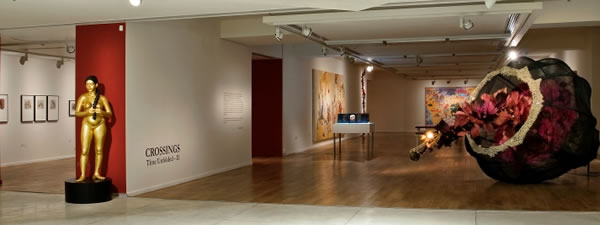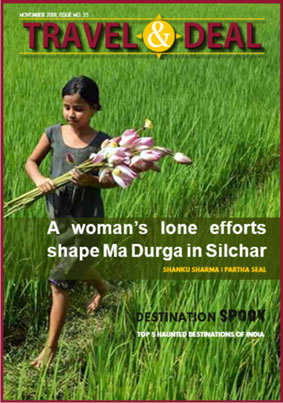For those travelling, away from the coastal resorts and staying in the city, there is anunbridled joy in the potential of seeing so many cultural landmarks; walking the length of the boulevards and rooting out the small boutique shops; where the hotel is the beginning, the middle and the end of a manageable adventure in our otherwise relatively ordered live. Living and working in London, I have an invitation to stay at the Grange’s flagship hotel in St Paul’s; The Grange Hotel, is taggedthe leading independent luxury hotel group, that have sixteen possibly seventeen hotels spread out across central London, in the Bloomberg, Fitzrovia, Holborn and White City area, among others.
The buzzwords apply, ‘style’ ‘luxury’ ‘quality’, ‘modern’ and ‘corporate’,as the linguistic skin for the Grange’s conference halls, restaurants, and leisure facilities,that are housed under one very stylish glass ceiling. Walking from St Paul’s, just before making the walk across the millennium bridge, with the impressive colossus of Saint Paul’s Cathedral on one side and the refashioned former power station that is Tate Modern rooted to the other, I arrive at the subdued glass fronted Grange Hotel. Besides being incredibly well located, almost at the centre of the city, where all modern amenities at within walking distance; the theatre, the arts, shopping and dining; the hotel impressively sits very close to the Thames; making for an impressive panoramic view. Coming off the thorough-fare and heading into the brightly lit lobby, can be likened to coming in from the cold. The disparate avenues that lead off the entrance are initially a little confusing as you look for the reception desk, walking in one direction then returning to another. Though the warmth of feeling that welcomes as you walk the length of the lobby is initially very pleasing and the subsequent assistance at any of the desks is gratifying,unfortunately it takes a little cajoling to catch the attention of the attendee’s behind the desk, who appear to all be facing down, absorbed by their new technologies than those coming in and out of the hotel.
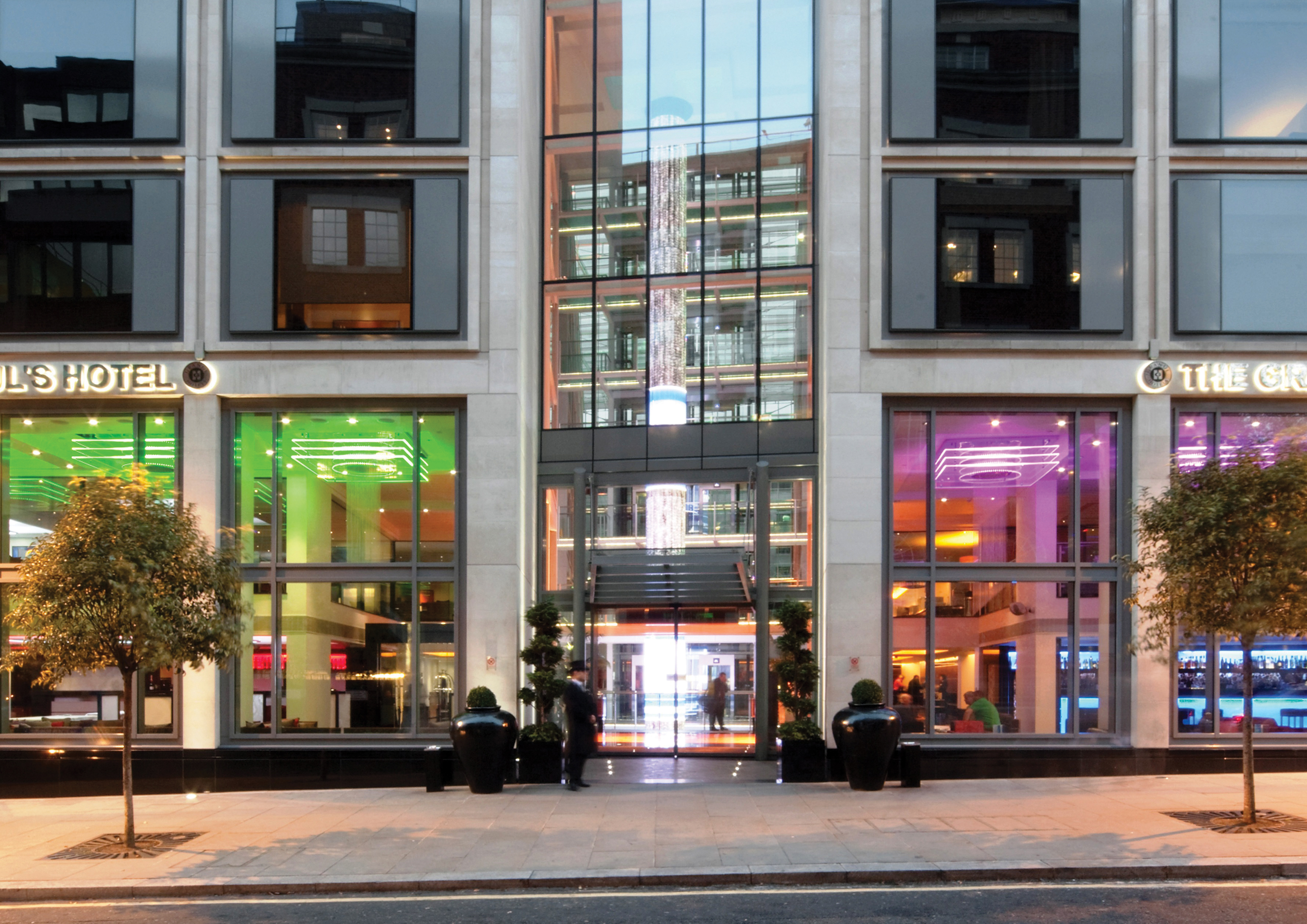
Entirely glass fronted, the hotel building has an air of iconoclastic authority about it as it gleams in the nocturnal light. Inside the glass fronted facade easily overshadows the tidy arrangement of fora and furniture; as the modern tectonic skin of the outside and inside of this building, together with the heavy marble flooring proves slightly unnerving for its authoritarian edge, but obviously utterly in keeping with the need to appeal to the monopoly of their guests who are corporate. I have it efficiently instructed to me that from Monday to Thursday the hotel caters entirely to major business clients, and then Friday through to Sunday evening, the hotel altered its agency for those temporarily coming through London for pleasure.
Inside the atrium, just beyond the reception desk, the sprinkle of green leaved potted plants in the vastness of the lobby come as more of a distraction than as a pleasure, but might that be due to the uncompromising design of metal and glass. Less like an international airport and more akin to the ground floor of an investment bank, I may have been better suited arriving for a conference than dressed very casually and carrying an over-night bag.Yet such an innocuous observation explained a great deal about the engine rooms of this glittering pandora’s box.Impressive squared footed conference spaces that can on occasion double as wedding venues are in the impressive underbelly of the hotel building, where those invited business delegates of international corporations come to entertain ideas and programme strategy for their companies. Such a grand central space is mirrored by smaller more intimate boardrooms for smaller sized meetings; in which tables run the length of the carpeted room. The corporate client is clearly the lynch-pin of such a centrally located hotel, and obviously the majority of delegates are encourages to morph overnight guests, as they engage in the array of work and leisure amenities in equal measure.

My room, an executive double, is initially impressive for its view, cornered up against Saint Paul’s Cathedral, it is almost impossible not to be impressed by the vast splendor of this gargantuan building that appears to have been rooted to its river location in history since time immemorial. The large heavy windows that complete the comfortable sized room give a temporary audience a prime location from which to adore Wren’s landmark building. When not frozen by the view, the interior of the room feels a little cluttered, either too much furniture adorns the room, or the geography of the space is such that much less is physically possible; minimal is actually no bad thing. The adjoining bathroom is a little small, the central light above the mirror flickering like a car’s rear indicator; and the shower head reaches out as far as the plug-hole directly below, which has you almost pinned upto the wall of the bathroom, as the warm peppered water spray falls down and not out. The executive doublefor all its furnishings is comfortable. Rich curtain colours fall from the windows, the heavy doors to the cupboards and bathroom retain a polished natural pattern that delineatesthe internally separated spaces; bathroom from bedroom, bedroom from clothes cupboard. Centrally the twin bed can be likened to an armchair; reliably comfortable though a little tired, and the accompanying egg chairs appear stylish if a little redundant. There is a reassuring atmosphere to the room as the evening progresses and the view becomes one’s own.
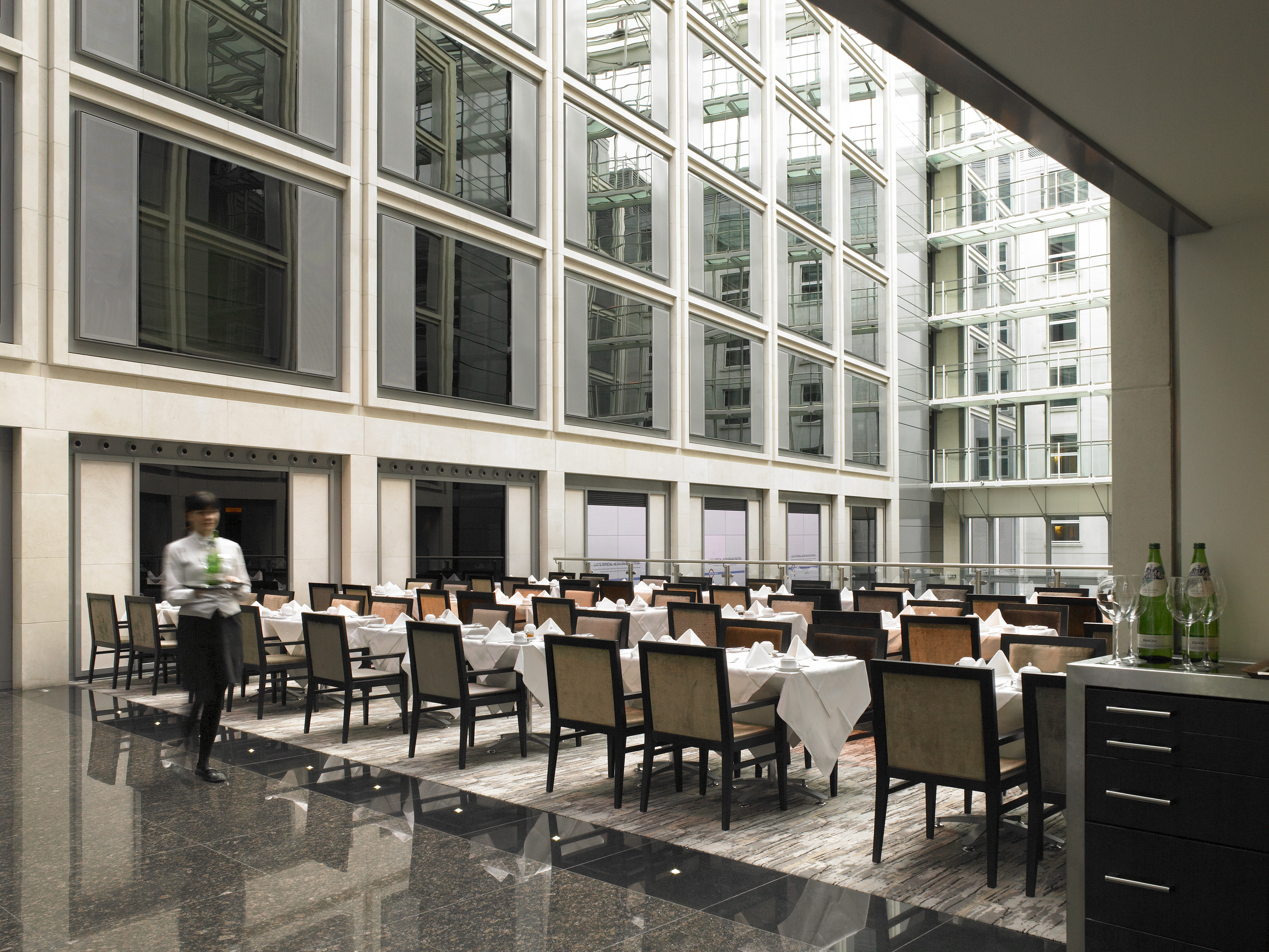
Supper is a choice between three amble sized restaurants, the Novello which is located at the base of the vast open atrium on the first floor, where analternative choice of table d’hôte and à la carte menus are both available. Novello appears warmly welcoming for a wedding party that is collectively dinning in the open plan glass house, as the evening is reassuringly animated by guests absorbing the pleasures of the hotel’s cuisine. Situated in another corner of the first floor is the Globe restaurant, a limited space in which many more tables and chairs are made available than guests attending. On the evening I attend it is entirely empty and such circumstances affect one’s choice of dinning room. Glancing over the menu, it appears proficient, international and charming.
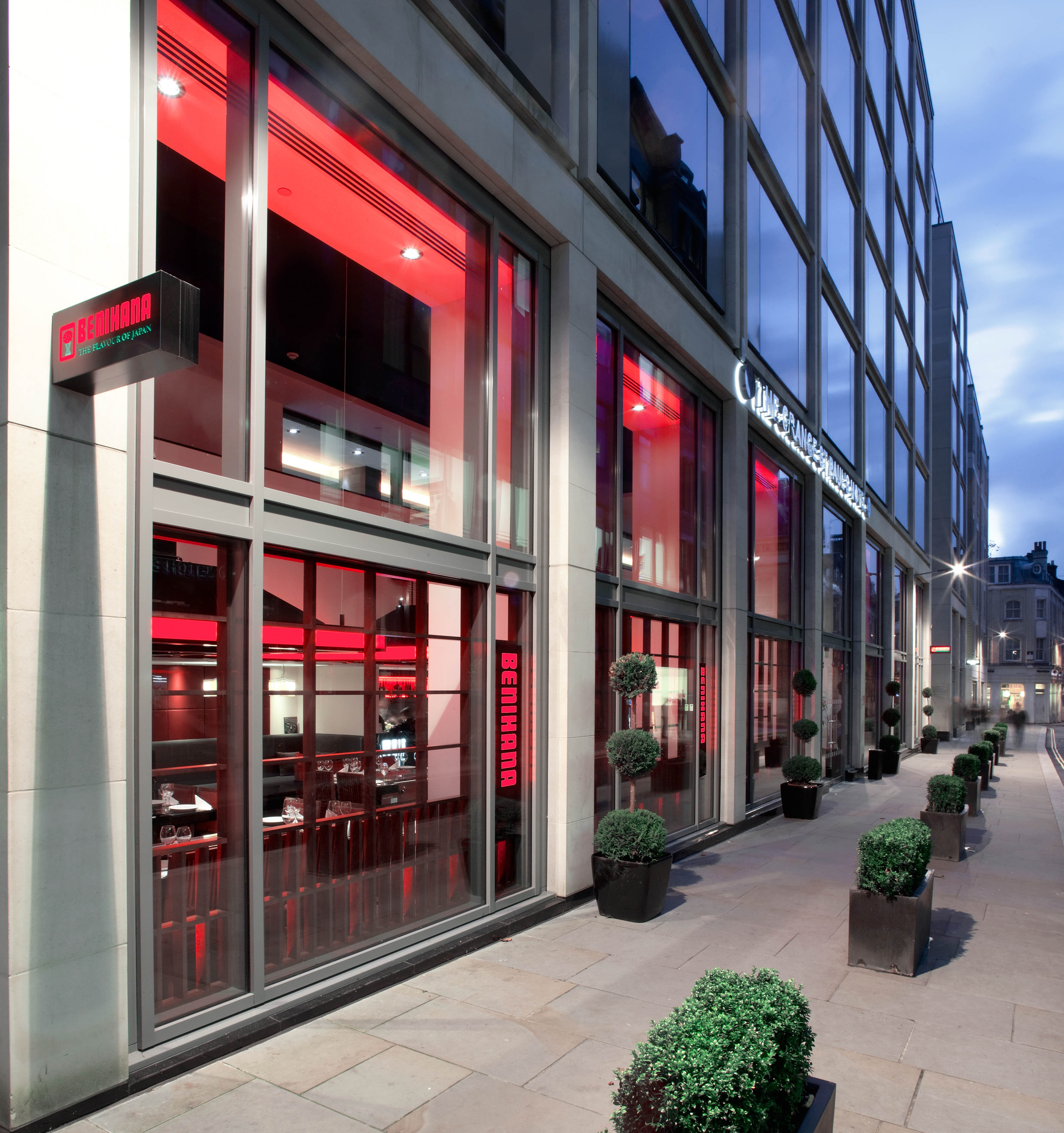
The void of one restaurant leads one to want to follow the nuances of noise in an adjoining restaurant, the Benihana, which is a leading Japanese franchise, attached to the hotel, in which a more freely moving customer appears to come in and out, makes for a reassuring final choice of place to eat. A volume of people is evenly seated around the metal plated tables in the warm dining area, as waiters feverishly running the length of the restaurant, perspiring for their effort. High-hatted chiefs roll into eating rooms as they park up to a given table with a culinary trolley of finely cut poultry, meat, vegetables and plastic bottles sauces. Small spied fires break out at interspersed tables, as guests give a gutsy cheer to the flames rising from their table, and upon deciding of what to eat, each of the chief’s begins a rousing dance of aluminum containers that crash against the metal plates and pepper the air with a sharp hint of aromatic spies. Likened to performative cuisine, for want of a better word, the hum of restaurateurs is cajoled, even aroused by the chief come entertainer, who rather than rooted to a kitchen somewhere at the back of the restaurant is ordered out to a table of hungry diners, who upon ordering can begin eating an array of warm and wonderfully decorated appetizers, that are cushioned by a choice selection of rich and aromatic red and white wines. Upon the recommendation of the waiter, clasping his little black book, I order a French bottle of Domaine du Seuil Merlot Cabernet Sauvignon, Premiéres Côtes du Bordeaux, 2006-7; that swiftly arrives and is promptly opened before me for tasting. It is quite perfect, rich, full-bodied, and rounds my palette like a spoon of honey running and flooring the length of my throat. As the liquid candy that accompanies our meal, my wife selected a series of well-balanced appetizers and two prawn and fish supper main courses. A small dish of seaweed salad, crunchy prawn tempura, a fresh ginger salad, and a twin main course of hibachi prawn and hibachi miso black cod in a rich syrupy sauce are all efficiently cut, cooked and promptly served to us. The dishes are sharp, well seasoned, rich and nourishing, flavors complementing each other perfectly, as I take small morsels of each of the plates onto my chopsticks. Turning the vegetables and fish over in my month, I return to the red wine at every occasion, in order I can attempt to furnish my palette with as many of the distinctive tastes as is possible; and it works, I feel an incredible sense of contentment at my being at this table of well worked dishes. A gripe if any is possibly the cumbersome sized white onion slices might have been better red, and the chocolate cake dessert lookedpositively dry and uninteresting, which delivered an abrupt full-stop to the culinary experience; but for such minor misdemeanors it was otherwise a handsome food experience.
An opportunity for a small aperitif on the roof terrace proves impossible for a private function, and as I arrive for a seek preview the event appears to be drawing to a premature end, and the bar-staff usher me back towards the glass lift, which proves a little disappointing for the first Friday of the month. I am politely informed of a clubin the basement of the hotel. Currently up on the seventh floor without my room key, I recline the opportunity to renegotiate the entire glass building for an hour or more of throbbing bustle in a tightly confided space. Having eaten and drunk to great aplomb I retire to my room on the sixth floor, and seek another opportunity to look over the architectural façade of Saint Paul’s cathedral before I retire for the evening. For all of the animated action that occurs during the course of the evening at my hotel, there is an impossible calm that appears to resonate out from the reassuring facade of Sir Christopher Wren’s building. I lose myself in its charming awe and then turn to find my side of the bed.
Woken to the reassuring sound of heavy bells chiming at every hour from Saint Paul’s, I quickly realize I am not at home under the ailing duvet but somewhere else entirely. Returning to sleep I am once again woken by the bells turning over on the hour every hour, closer to the morning and further away from the night before. It bothers me little as I feel a sense of mild gratitude for my grievance, if it be that; and on a fourth round of the bells tolling I rise and turn for the bathroom, for a shower, and I recall the splendid supper I had the evening previously. The intimacy of the bathroom is a little less awkward this morning as I become more familiar with the idiosyncrasies of the hotel room layout as everything even becomes more homely.
My breakfast is continental, and arriving out onto the first floor from the glass elevator, it appears that the majority of guests are all present and correct for breakfast. Instructed that the continental breakfast circumnavigated around chiefs making eggs to order, we are then promptly informed ‘continental is everything but eggs ’, so I venture for a plate of tired pastries, a little toast and orange juice. My wife disapproves of regular coffee and orders a soya latte, that when it eventually arrives is tepid to the touch and tastes very much like a regular coffee with coloured froth. As much as supper the previous evening was a marked success, continental breakfast failed to deliver any kind of appeal or nourishment. Those piling into the full English breakfast appeared to be having more success, as the regular dishes appeared somewhat more appetizing. Possibly the introduction of an egg might have arouses my taste buds a little more.

Arriving a little late for my massage, my wife and I are welcomed at the reception desk by the spa therapists, with the offer of drinks and the polite instruction to fill in our health conditions on a questionnaire styled clip-board. Once complete we are taken into a subdued room with a modern bath and two tables at which we lay face down encouraged to apply a towel over our midriffs before we begin. My face protruded from the doughnut shaped facial guard, I attempt to relax with a sense of anticipation of what was to follow. Initially my arms and legs are prodded and pulled and then rhythmically turned over, as the massager’s hands appear to fall deeper and deeper into my skin. During the massage there are definitely moments where I feel a sense of unmitigated bliss that turns to want of sleep, unfortunately the whole experience proves more conductive for my wife, as any bliss for me is interrupted by a need to tense up for all of the knots in my lower legs and back, and the tickling sensation that wants to overwhelm me at every opportunity. That said it proves another wonderful experience and such opinions are more personal than a real reflection of the value of the experience.
Inside the room the music proved more irritating than engaging, and I spent a great deal of my time considering how the atmospheric anthems ofSigar Rós or the Boards of Canada might have transformed those clichédundulating sounds into something more contemporary and engaging for a cosmopolitan guest list. Peeling myself off the toweled table looking for my t-shirt and gown in the resplendent light, my wife described the full body massage, as the best she had had for a long time, which is endorsement enough for any practice or product. Another success, I take my apple juice and we are invited to sit in the lounge area with tea and cake.
I root out today’s copy of the Financial Times and then we consider a very quick step into and out of the sauna. Walking through the men’s changing room, across from the well-equipped gym, and into the pool area, the layout down here appears charming and of an atmosphere that encourages one to truly indulge in idle relaxation. The pool is warm to the touch and the sauna is heightened for my having had a deep skinned massage. The warmth of the enclosed room turns those knots in my lower calf muscles into congealed syrupy and I glee a mischievous smile. Our having to return to our room to pack can only be described as mildly annoying, because I am becoming more and more attached to the hotel and its efficient atmosphere. The view from my room is enduring, the amenities comfortable, the cuisine consisted of many positives; so turning the hotel literature over a final time, I consider that in spite of the hotel’s heavy slant on their corporate clients, as a day tripper I convince myself that I wish for more of the same.
Rajesh Punj







